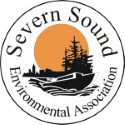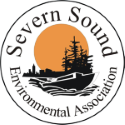Constructed Wetland for Stormwater
PENETANGUISHENE WATERFRONT PARK
CONSTRUCTED WETLAND FOR STORMWATER TREATMENT
Urban stormwater can pollute nearby lakes and streams. lawn fertilizers, pesticides, automobile emissions, oil and chemical spills and fecal droppings from animals, all contribute to water pollution. In addition, the thoughtless disposal of hazardous household wastes, such as used motor oil or leftover paints, into catch basins, is harmful to life in downstream lakes and streams including Severn Sound. The main concern of the Severn Sound Remedial Action Plan (SSRAP) was that stormwater contains phosphorus, the nutrient which controls the growth of algae. Heavy algal growth makes water green and murky, unpleasant for swimming and boating, and can harm the balance of aquatic life. In addition, the SSRAP concerns included preventing bacterial and metals contamination from entering Penetang Harbour. One proposal that was considered and later implemented was the construction of a large stormwater pond to handle stormwater runoff form the Main St. area of the Town of Penetanguishene.
At the time, this project represents the single largest reduction of phosphorus loading undertaken by the Town of Penetanguishene. The area treated represents the older sewer system in the downtown core as well as a smaller residential area. The project was identified in the SSRAP Urban Stormwater Management Strategy as a high priority project and steps were taken to integrate the wetland into the overall waterfront park design process that the Town of Penetanguishene was pursuing. The project could not have been accomplished without the generous funding support of the Ontario Great Lakes Renewal Foundation and the Town of Penetanguishene. Funding for the construction of the viewing platform came from the Rotary Club of Penetanguishene and the Ontario Ministry of Natural Resources Community Wildlife Involvement Program.
The wetland was constructed at the waterfront, just south of the Main Street sewage treatment plant, and treats stormwater from a catchment area of 33.5 hectares of the downtown commercial and residential core. At least 60% of the phosphorus that was formerly going directly to the Bay – a minimum of 17.5 kilograms per year – is being removed by the project.
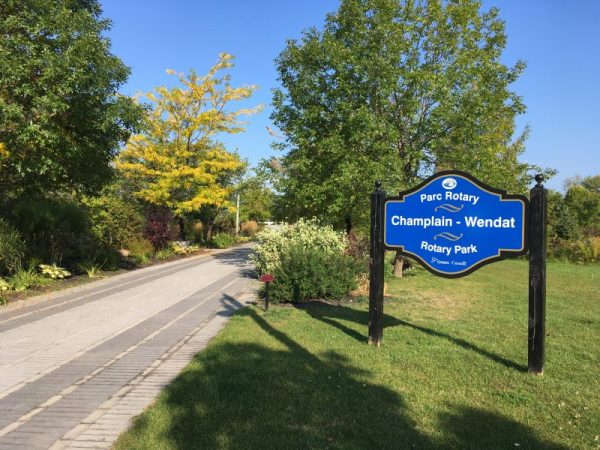
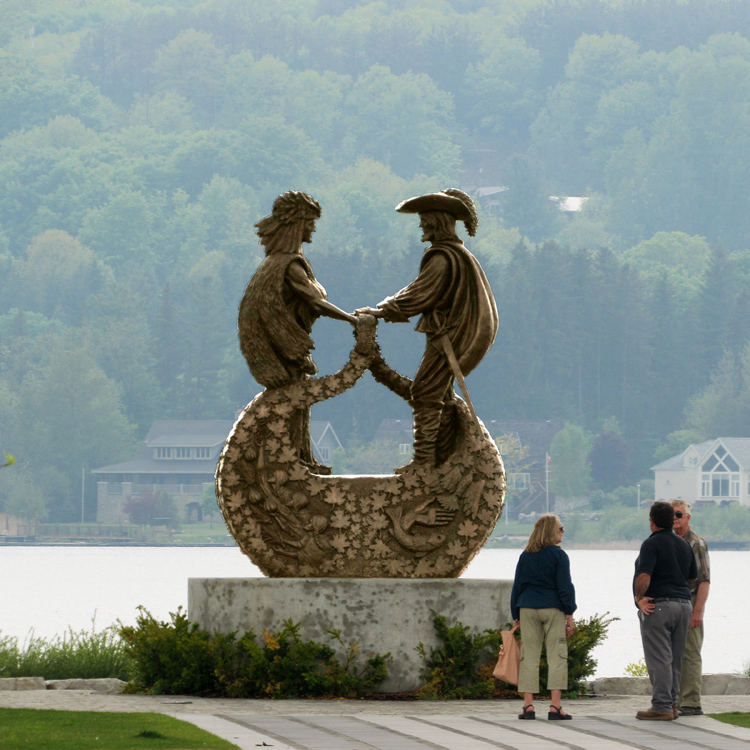
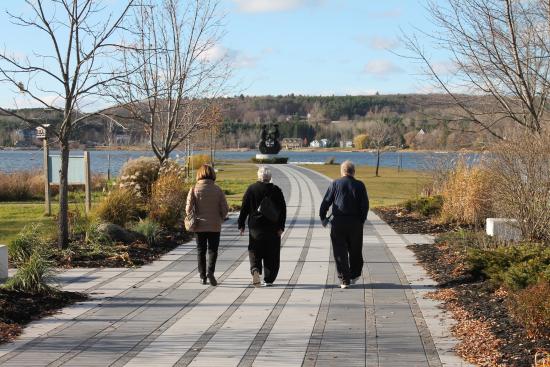
Settling is the primary treatment. The average depth of the wetland treatment area is 0.75 meters (about 2 ½ feet). In a storm event, the maximum depth would reach 1.2 meters (about 4 feet). Stormwater first enters the forebays designed to remove sand and gravel. From the forebays, the stormwater flows through the wetland area which provides additional treatment. Fine sediment particles that attract pollutants such as phosphorus, nitrogen, organic matter and trace metals fall to the bottom of the pond instead of being discharged into the bay. Wetland plants, algae and bacteria take up nutrients needed for their growth. Emergent plants such as sedges and bulrushes provide an attractive habitat for wildlife and waterfowl, enhance sediment trapping and prevent sediment resuspension.
Results
The benefits of the project include improvements to the fish and wildlife habitat in the bay and along the shore. Area residents and tourists now enjoy immediate improvements to the landscape and enhancements to the Waterfront Park trail system. It is estimated that 60% of phosphorus going directly into the bay, almost 17.5 kilograms per year, was removed by this project resulting in long term improvements to the water quality of Penetang Harbour. Other features that were built into the project include a nesting island for waterfowl (E) and an observation platform for visitors (D) were incorporated into the plans.
